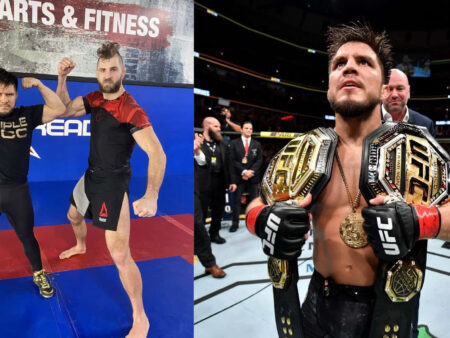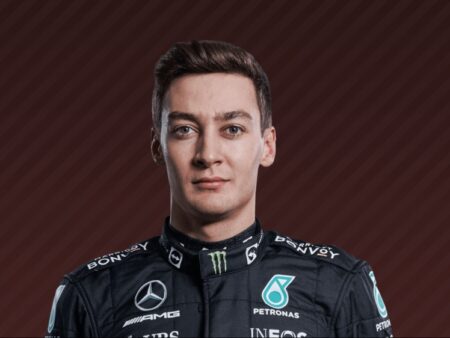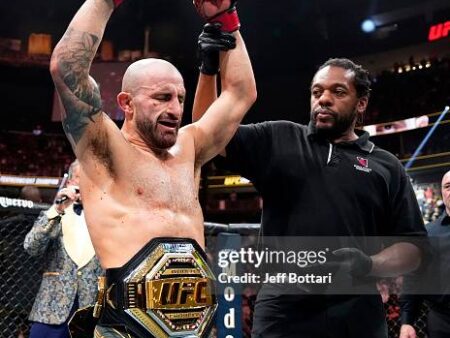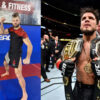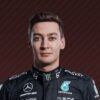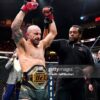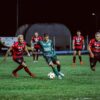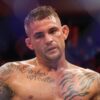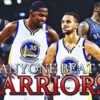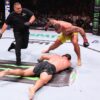On March 14, when the Utah Jazz hosted the Toronto Raptors, it was anticipated to be a chance for the Jazz to break their seven-game home losing streak against a team with a losing record. Jazz`s top scorer, Lauri Markkanen, was back in the starting lineup after missing six of those seven games.
However, instead of a showdown between All-Star forwards Markkanen and Scottie Barnes, spectators witnessed a final quarter dominated by rookies and reserve players from both squads. Markkanen sat out the entire second half, while Barnes and Toronto`s other experienced starters (RJ Barrett and Immanuel Quickley) only played the first couple of minutes in the fourth quarter before being permanently benched.
As the game hung in the balance, the teams concluded with a total of five rookies on the court and only one player (Utah forward Brice Sensabaugh) who has been averaging double-digit points this season. The Raptors won, extending the Jazz`s losing streak to eight games. Utah also moved closer to securing one of the three worst records in the league, which offers the highest chances of landing the No. 1 pick in the NBA draft.
In the final weeks of almost every NBA season, there are essentially two races in the standings: one to secure a playoff spot, and the other to get the best odds in the draft lottery.
But this year, the race to the bottom is reaching new heights. The presence of Duke standout Cooper Flagg, considered a generational talent, combined with usual rebuilding teams like the Jazz, Raptors, and Washington Wizards, and several other teams like the Philadelphia 76ers, San Antonio Spurs, and New Orleans Pelicans, whose seasons have been hampered by injuries, has intensified the tanking competition.
Despite recent rules aimed at preventing star players from excessive sitting out, the problem of tanking persists. While NBA insiders consider new methods to curb this practice, the league`s weakest teams are finding innovative ways to accumulate losses late in the season.
`These next few weeks,` according to one NBA executive, `could represent the most intense period of tanking we`ve ever seen.`
Why NBA Teams Engage in Tanking
Anyone involved in the league`s yearly race to the bottom will attest to its unpleasant nature. Deliberately trying to achieve the fewest wins is not typically a franchise`s ambition.
However, those involved also acknowledge that securing a high draft pick is the most reliable strategy for achieving top-level success, a perspective unlikely to change soon.
`Philosophically, I am not aware of any significant movement to abolish our current draft approach, which is to allocate top picks to teams most in need of talent,` Evan Wasch, NBA`s executive vice president of strategy and analytics, stated to ESPN. `This principle is a cornerstone of our current draft system.`
This system, last modified by the NBA in 2019, uses a sliding scale of probabilities for teams to get a top-four draft pick based on a lottery held in May. The three teams with the poorest records each have a 14% chance of getting the first overall pick and a 52.1% chance of getting a top-four pick. (These probabilities decrease for teams with better lottery records, with the team having the best record among lottery teams having a 0.5% chance for the top pick and a 2.1% chance for a top-four selection.)
The lottery exists for a valid reason. Historically, a high lottery pick is the most direct route to acquiring a transformative talent for a franchise:
Over the last 45 years, only five championship-winning teams were not spearheaded by a player who either had won or would win the NBA MVP award: last year`s Celtics, the 2019 Toronto Raptors, and the Detroit Pistons in 1989, 1990, and 2004.
Among the other 40 teams, one of 14 players was on at least one of these teams: Magic Johnson, Larry Bird, Julius Erving, Michael Jordan, Hakeem Olajuwon, Shaquille O`Neal, Tim Duncan, Kobe Bryant, Kevin Garnett, Dirk Nowitzki, LeBron James, Stephen Curry, Giannis Antetokounmpo, or Nikola Jokic.
Five of these 14 players—Johnson, Olajuwon, O`Neal, Duncan, and James—were drafted first overall. Only four—Bryant, Nowitzki, Antetokounmpo, and Jokic—were selected outside the top seven picks.
Even among the five outlier teams, only the Raptors, led by Kawhi Leonard, featured a player drafted outside the top three. Chauncey Billups, the 2004 NBA Finals MVP, was picked third overall in 1997, the same position as current Celtics stars Jaylen Brown and Jayson Tatum in 2016 and 2017, respectively. Isiah Thomas, the key player for the 1989 and 1990 champion Pistons, was the second overall pick in 1981.
In the past 45 years, only five NBA champions were led by a player drafted outside the top seven.
This explains why NBA teams tank, and this season is no different.
Tanking Strategies Employed This Season
The NBA`s `player participation policy,` introduced before the 2023-24 season, was not primarily aimed at tanking teams. The league intended to prevent healthy star players from sitting out games. However, these rules also require teams aiming for the lottery not to sideline their star players unless there`s a genuine injury.
The Jazz violated this policy earlier in March and were fined $100,000 for not having Markkanen available for a March 5 game against the Wizards `and other games.`
While a minor cost for a top draft pick, the escalating fines—the next violation would cost the Jazz $250,000—led the team to adopt a different strategy in their March 14 loss to Toronto.
Markkanen`s usage in that game was an extreme example of what the Raptors have been doing since the All-Star break: benching their key players during crucial moments.
Since then, Toronto has played 37.5 `clutch` minutes, as defined by NBA Advanced Stats (a score difference of five points or less in the final five minutes of regulation or in overtime). The Raptors have allocated more of these minutes to players signed midseason or on two-way contracts (46 minutes combined) than to their leading scorers, Barnes and Barrett (43 minutes).
Meanwhile, the Jazz have limited Markkanen to just four of their 25 clutch minutes since the All-Star break. Notably, Utah has been careful not to play Markkanen against other teams also vying for lottery picks. The games Markkanen has missed this season have been against teams with a combined winning percentage of .450, compared to .545 for the teams he has played against.
Walker Kessler, the starting center for the Jazz, has also continued to miss games, including the loss to Toronto. This game was listed as a `DNP-CD`—did not play, coach`s decision—after Kessler had previously been listed as out for rest in six games, including the one Markkanen missed that resulted in a fine.
`[Fans] understand we`re in rebuilding phases, but I believe our players compete in a way that`s still enjoyable for our fans,` Jazz coach Will Hardy commented earlier this month. `Our young players play with great effort, and while we`re not perfect, and some games are messy and unrefined, I think the competitive spirit and energy of these young guys are something our fans appreciate.`
`For our team, it`s a point of pride that no matter who is on the court, our fans know we will play with immense passion and joy.`
Wasch stated that the NBA will continue to monitor player availability, especially for star players like Markkanen, but expressed no concern about teams benching starters in critical game moments.
`We don`t police rotations in that manner,` Wasch said. `For the league to intervene and declare that a team`s choice to play one player over another was incorrect seems like a slippery slope. …`
`And besides, sometimes these younger players end up winning the game.`
Cooper Flagg: A Generational Prospect Driving Tanking
Entering the college season, there was still some debate about whether Flagg was the top prospect for the 2025 draft. Rutgers` Ace Bailey and Dylan Harper were contenders, along with Baylor guard VJ Edgecombe, who had impressed internationally with the Bahamas in FIBA Olympic qualifiers last summer.
With Flagg competing for National Player of the Year, despite being one of the youngest players in college basketball, this discussion has largely been settled. NBA scouts from teams intentionally losing games are now considering Flagg`s ranking among recent No. 1 overall prospects.
`His uniqueness comes from being exceptionally young, even by freshman standards,` a scout remarked about Flagg, who won`t turn 19 until December. `Yet, despite his age, he has been productive in every aspect of the game against top-tier competition.`
Analytics experts at the MIT Sloan Sports Analytics Conference recently placed Flagg around the 85th percentile of No. 1 picks, indicating he is better than 85% of players previously selected first overall.
Since 2005, the first draft with the NBA`s current age limit, Flagg`s projected 5.2 wins above replacement player (WARP) rank third among top picks, only behind Anthony Davis (2012) and Zion Williamson (2019), another highly touted Duke prospect. Like Flagg, Davis and Williamson also sparked intense races to the bottom of the standings.
| Player | Draft | Age | WARP | Consensus |
|---|---|---|---|---|
| Zion Williamson | 2019 | 18.8 | 5.1 | 5.5 |
| Anthony Davis | 2012 | 19.1 | 4.8 | 5.3 |
| Cooper Flagg | 2025 | 18.3 | 4.6 | 5.2 |
| Kyrie Irving | 2011 | 19.1 | 4.2 | 4.9 |
| Blake Griffin | 2009 | 20.1 | 4.2 | 4.9 |
| Andrew Bogut | 2005 | 20.4 | 3.8 | 4.6 |
| Greg Oden | 2007 | 19.2 | 3.6 | 4.5 |
| Karl-Anthony Towns | 2015 | 19.4 | 3.5 | 4.4 |
| Victor Wembanyama | 2023 | 19.3 | 3.1 | 4.1 |
| Ben Simmons | 2016 | 19.8 | 2.9 | 3.9 |
| Andrea Bargnani | 2006 | 20.5 | 2.8 | 3.9 |
| John Wall | 2010 | 19.6 | 2.4 | 3.6 |
| Deandre Ayton | 2018 | 19.7 | 2.2 | 3.5 |
| Andrew Wiggins | 2014 | 19.2 | 2.2 | 3.5 |
| Markelle Fultz | 2017 | 18.9 | 2.0 | 3.4 |
| Anthony Edwards | 2020 | 18.7 | 1.9 | 3.3 |
| Derrick Rose | 2008 | 19.5 | 1.7 | 3.1 |
| Cade Cunningham | 2021 | 19.6 | 1.5 | 3.0 |
| Anthony Bennett | 2013 | 20.1 | 1.3 | 2.8 |
| Paolo Banchero | 2022 | 19.4 | 1.1 | 2.7 |
Stats-based projections heavily prioritize a prospect`s performance relative to their age, which is where Flagg excels. His main competitor for National Player of the Year, Auburn`s fifth-year senior Johni Broome, is over four years older.
As the scout noted, most players Flagg`s age are still in their senior year of high school. Flagg reclassified in the summer of 2023, entering his final year at Montverde Academy in Florida, making him potentially the second-youngest No. 1 draft pick, only behind LeBron James (and younger than high school draftees Kwame Brown and Dwight Howard).
While Flagg`s age and performance don`t guarantee championships, they explain why teams are exploring new tactics to draft him.
Potential Solutions Discussed Within the League
The NBA has shown a willingness to adapt, but changes typically take time.
What could be the next measure against tanking? We consulted league sources for ideas to improve the season`s final months:
1. Further Flatten Lottery Odds
Initially, the NBA draft lottery gave all non-playoff teams equal odds. This changed after the Orlando Magic won the top pick in 1992 and 1993. In 1993, with rookie Shaquille O`Neal, the Magic had the best record among lottery teams at 41-41. One executive suggested making the odds even flatter than the 2019 adjustment.
However, this has a downside: if too many teams have similar top-pick odds, some might prioritize a shot at a franchise player over a playoff push.
2. Reward Wins Post-All-Star Break Instead of Overall Losses
Currently, the system rewards teams for losing in the final two months. What if this was reversed?
By using a part of the second half (like post-All-Star break or the last 20 games) to work inversely—the most wins in this period determine lottery odds—it would give struggling teams every reason to compete and play their stars.
For instance, last season, the Spurs were 11-44 (.200) pre-All-Star but 11-16 (.407) afterward. Combining pre-break wins and post-break losses (and vice versa), the Spurs` `lottery record` of 27-55 (despite a 22-60 actual record) would improve their lottery odds by rewarding late-season competitiveness.
`It would incentivize everyone to compete until the end,` an executive noted.
Here’s how last season’s lottery standings would shift under this rule:
| Team | Pre-ASG | Post-ASG | Actual | Revised |
|---|---|---|---|---|
| Detroit Pistons | 8-46 | 6-22 | 14-68 | 30-52 |
| Washington Wizards | 9-45 | 6-22 | 15-67 | 31-51 |
| Charlotte Hornets | 13-41 | 7-20 | 21-61 | 33-49 |
| Portland Trail Blazers | 15-39 | 6-22 | 21-61 | 37-45 |
| San Antonio Spurs | 11-44 | 11-16 | 22-60 | 27-55 |
| Toronto Raptors | 19-36 | 6-21 | 25-57 | 40-42 |
| Memphis Grizzlies | 20-36 | 7-19 | 27-55 | 39-43 |
| Utah Jazz | 26-30 | 5-21 | 31-51 | 47-35 |
| Brooklyn Nets | 21-33 | 11-17 | 32-50 | 38-44 |
| Atlanta Hawks | 24-31 | 12-15 | 36-46 | 39-43 |
| Chicago Bulls | 26-29 | 13-14 | 39-43 | 40-42 |
| Houston Rockets | 24-30 | 17-11 | 41-41 | 35-47 |
| Sacramento Kings | 31-23 | 15-13 | 46-36 | 44-38 |
| Golden State Warriors | 27-26 | 19-10 | 46-36 | 37-45 |
The teams benefiting most are those that pushed for the postseason (Houston, Golden State) and the Spurs, who remained competitive late in the season. The Raptors and Jazz, who heavily lost games to protect draft picks, are penalized. (Utah succeeded, Toronto did not.)
This leads to another suggestion from coaches, scouts, and executives:
3. Revise or Eliminate Pick Protections
The most evident cases of tanking come from teams trying to keep their draft picks. The Dallas Mavericks` tanking in 2023 to keep a top-10 protected pick is a prime example. (This cost the Mavericks $750,000 but gained them starting center Dereck Lively II.) This season, the 76ers aim to keep their top-6 protected pick due to injury-impacted season.
Sources suggest a simple fix: reduce mid-lottery pick protections to top-4 protected (lottery jump), lottery protected, or unprotected. This would eliminate the most blatant tanking instances.
`Lottery reform aimed to smooth outcomes so no team saw a major benefit in being third versus fourth, or eighth versus ninth,` Wasch said. `Pick protection undermines this. A top-10 protected pick makes finishing 10th or 11th-worst significantly different.`
4. Lottery Odds Based on Performance Against Other Lottery Teams
One executive proposed ranking lottery teams by their head-to-head record against each other. This would incentivize competition in every game, especially those against similar teams.
However, this could push play-in fringe teams to aim for a top pick instead of the playoffs.
5. Enforce Current Rules More Strictly
Some in the league believe the current system is adequate. Bad teams are natural, and lottery positioning is part of the sport.
With increased tanking, some argue stricter enforcement against resting healthy players would solve many issues without further system tweaks. `Let`s start there,` one executive suggested.
Ultimately, a top pick remains the best path to a franchise-changing player. The NBA has already tried to curb tanking by flattening lottery odds and creating play-in games. `We`ve seen many positive trends,` Wasch noted.
Wasch indicated that tanking solutions might be discussed by the NBA competition committee.
`Post-season, it`s reasonable to expect we`ll re-engage with our competition committee,` Wasch said, `to explore potential solutions to this issue.`
